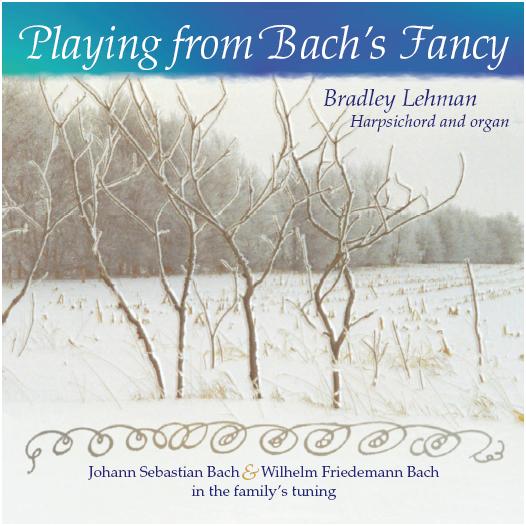 LaripS.com, © Bradley Lehman, 2005-22, all rights reserved. All musical/historical analysis here on the LaripS.com web site is the personal opinion of the author, as a researcher of historical temperaments and a performer of Bach's music. Outlines of academic articles
Outline of "Bach's extraordinary temperament: Our Rosetta Stone"My main scholarly article about this discovery is published in the February and May 2005 issues of Early Music. That article describes the historical context and provides musical and mathematical analysis.All of these sections are integral parts of my musicological argument, with some interdependencies across the seven portions: two in print and five as "supplementary" PDF files on Oxford's web site. Download these seven PDF files free from the links here marked with ***. In Oxford's copy-edited version for publication, my manuscript was reorganized into two main halves for print, and they eliminated three sections (marked A, B, C here). The remaining sections of closer musical analysis, plus the detailed mathematical comparisons among temperaments, became "supplemental" web-only files to save space in the printed journal.
In addition to reading and listening, it is especially important to go through the hands-on musical practice playing examples at a harpsichord (as detailed in the printed part 2 plus its web portion), to hear the evidence presented most directly. That is something to do by ear for best understanding (because Bach would have had to do so, without electronic aid). The process is to work as a tuner/performer reproducing Bach's responsibilities, where I believe he drew compositional/theoretical ideas from the sound, listening directly through a suitable instrument.
The serial presentation in the journal, across two issues of print, has had some advantages and disadvantages. The chief advantages are the longer exposure to generate readers' interest about the material, and the ability to preserve most of the manuscript into publication (eventually!) without cutting it more drastically. Another advantage is that this is the lead article in the Early Music issue that Oxford University Press gives away as a free sample, to web visitors who register at the main Oxford Journals or Early Music entry points! [All of the article is available for free, from the courtesy links right here on this "Outlines" page...but readers have to know to come here looking for any portions they've missed. That is not absolutely clear by reading merely part 1, either in print or on the web.] The chief disadvantage is: some readers have obviously not bothered to read part 2 at all, or the web portions, before formulating their disagreements with either presentation or content. Also, some readers misunderstand the necessity of reading the web "supplements" as a vital part of the article, and the necessity of listening to music tuned this way to grasp the musical points! Such readers have already broadcast their reactions and argumentation against the article, before all the material was available to them as a unified piece...and this has led to some serious public misunderstandings about this article's scope and completeness. Most of the readers' correspondence (as published in the August issue of Early Music, and a few follow-ups) had already come in to the author and editor as objections, before part 2 was even in print yet: reflecting preconceptions based mainly on part 1. There have also been several books and articles by other people, published 2006 and 2007 (so far), that cite and argue with only part 1 in isolation...bringing up issues or objections that I had already addressed myself in part 2 (May 2005)! Similarly, much of the internet chatter about this article (some of it uncharitable and seeming outright vicious, as a rumor-mill) has been an airing of people's personal dissatisfactions with their own expectations of part 1 in isolation, before May 2005. To me, this seems akin to walking out of a concert in the first 15 minutes and then presuming to "review" the entire concert by guesswork. I most appreciate the comments of readers who have read all the portions and who have tested the musical points directly at a harpsichord, as specified in part 2. That is, it is important to engage all the material directly, before trying to formulate cogent agreements or disagreements with it! It's nice that a reading of part 1 (or the wandering-in from web searches, finding the LaripS.com web site) sparks people's enthusiasm to respond at all, but...it's also nice when readers take the trouble to study all the freely available resources, to see what's already been addressed. The FAQ pages can also help with this problem. But, they are not substitutes or shortcuts for reading the whole article, either.... [Download all seven sections as PDF files] [Download the 32MB ZIP file of listening examples]
Outline of "The 'Bach Temperament' and the Clavichord"This shorter article is published in the November 2005 issue of Clavichord International.
Outline of "The Notes Tell Us How to Tune"Bach: Journal of the Riemenschneider Bach Institute Autumn 2022, Vol 53:02: 157-194. [PDF]Abstract: (...) Bach's keyboard parts and solos show that he required more than twelve differently named notes per composition throughout his career. For example, he frequently used both G# and Ab within the same piece. (...) This article presents a close look at this evidence of the required notes in Bach's music, with more than 400 pieces beyond the Well- Tempered Clavier Book I. (...) This article proposes that Bach required a sixth-comma temperament ordinaire to play his sharps and flats. That is the same practical tuning procedure and set of principles presented by this author in 2005. The background and enharmonic measurements from 2005 are explained more thoroughly in this article. Documents from Tosi, Quantz, Sorge, Marpurg, et al. provide context in recognizing the scale requirements, regular systems of intonation, avoidance of Pythagorean thirds, and matters of taste. (...)
|
v Introduction > Articles * Outline - Errata - Clavichord - ArtOfTemp - TheTuning v FAQ v Practice v Theory v History v Etc v Recordings |



